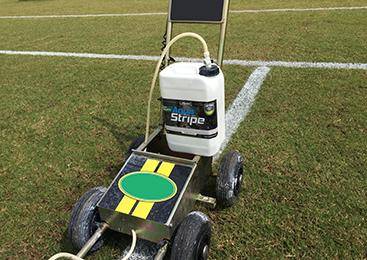In the world of sports, precision is paramount. Every line on the field, court or track plays a vital role in the game. Traditionally, achieving this precision meant the frequent use of paints and chemicals, leaving a noticeable environmental footprint.
However, as the world turns its attention toward sustainability, even the seemingly small details like field markings are undergoing a transformation. The advent of automated alignment machines, or linjeringsmaskin as Swedish people would say, is not only revolutionizing the way sports fields are prepared, but it’s also ushering in an era of environmentally responsible sports infrastructure.
Eco-Friendly Paints and Materials for Sports Fields
The shift towards sustainability in sports isn’t confined to the realm of automation; it extends to the very materials used to mark the playing fields. Eco-friendly paints and materials are emerging as game-changers in the world of sports infrastructure. These innovative substances are formulated to minimize environmental harm, from reducing volatile organic compounds (VOCs) to employing water-based solutions.
They not only offer precise, vibrant lines on the field but also contribute to the broader goal of reducing the ecological footprint of sports facilities. The adoption of such paints and materials underscores the commitment of sports organizations and field management teams to ensure that every game played leaves a positive mark on the environment.
Efficiency Equals Sustainability
Unlike traditional methods that often involve the overuse of paints, automated line marking systems are calibrated for accuracy, sparing every drop of paint not needed. This resource conservation translates directly into environmental benefits, as it curtails the production of excess paint and the associated waste.
Moreover, automation minimizes the need for labour-intensive, gasoline-powered machinery, further reducing the carbon footprint of sports field maintenance. In essence, efficiency through automation is proving to be the linchpin of sustainable practices in the world of sports infrastructure. It not only streamlines operations but also underscores the responsibility of sports facilities towards a greener future.
Maintenance and Longevity
Beyond the initial precision and efficiency, automated line marking systems offer a hidden yet invaluable gift to sports facilities: extended field life. The meticulous and consistent application of lines, logos and other markings enhances gameplay and contributes significantly to the field’s longevity.
Traditional methods, often reliant on manual labour, are susceptible to human error, resulting in uneven and premature wear and tear. Automation eliminates this variability, ensuring the field markings are consistently crisp and intact over time. As a result, sports facilities can extend the intervals between costly field resurfacing, reducing the associated resource consumption and environmental impact.












